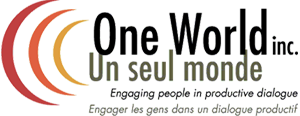 Communities across the country are taking part in an exciting new initiative that is designed to help end youth homelessness. They have been embarking on the process of developing coalitions, researching the issue and starting dialogues in order to develop solutions and to generate community momentum around this issue.
Communities across the country are taking part in an exciting new initiative that is designed to help end youth homelessness. They have been embarking on the process of developing coalitions, researching the issue and starting dialogues in order to develop solutions and to generate community momentum around this issue.
The Mobilizing Local Capacity (MLC) initiative, started by Eva’s Initiatives in Toronto (and funded by the Catherine Donnelly Foundation) was started about two years ago to catalyze action around this issue and to help communities develop broad strategies to deal with youth homelessness. Communities from across Canada applied to participate and, so far, six communities have been selected.
One World worked with Eva’s Initiatives to conduct a developmental evaluation of the MLC and here are some of the learnings that have emerged so far:
1) Thinking upstream: Most communities respond to homelessness by providing shelter beds. While this is a useful – and necessary – short-term response to the issue, the challenge is that the problem does not go away and more and more beds need to be provided. Communities need to start thinking upstream, to start dealing with the causes of the problem rather than just treating the symptoms.
2) Thinking like a system: Thinking upstream automatically means you need to involve a broader group of organizations in developing solutions. In Saint John NB, for example, high school guidance councilors expressed a strong interest in getting involved as they are often the individuals that high school students turn to when they are experiencing problems at home. Intervening at this early stage could help to prevent some young people from becoming homeless. Similarly, police, who often get involved when youth are already on the streets and involved in criminal activity, really want to get involved on the preventive side of the problem.
3) Engaging the ideas and energy of youth: From the very beginning of its MLC process, Kamloops decided that they wanted it to be youth-driven. They wanted to engage mainstream as well as homeless youth and give them a real voice. They found that youth care passionately about the issue of youth homelessness, and eagerly participated. They brought a drive and commitment to the issue that helped to engage the public in a way that likely would not have happened in an agency-driven process. (Check out this video that was produced by the youth). Much of that energy and perspective is reflected in the final community strategy.
4) It takes a coalition: One of the most important parts of the MLC process is that communities need to develop broad coalitions to develop a systemic approach to the issue, and to get the broad support to move the strategies forward. Kingston’s MLC initiative, led by the local United Way was particularly effective in developing a broad coalition of local organizations and local politicians to take action. Youth played a major role in this initiative as well.
5) A catalyst approach works: The MLC approach is a novel way to support communities to take action. Each participating community develops a strategy that is very “local” in flavor, and really resonates with local players. Participating communities do not receive much funding; instead, they are helped with coaching and connected to experts who can provide them with advice, as well as other resources. They are also connected with other communities going through the same process so there are many opportunities for learning and site visits. All of the communities reported they were very happy with this model of support.
We hope that the lessons learned in this initiative can be applied to other groups tackling complex social issues.



 Communities across the country are taking part in an exciting new initiative that is designed to help end youth homelessness. They have been embarking on the process of developing coalitions, researching the issue and
Communities across the country are taking part in an exciting new initiative that is designed to help end youth homelessness. They have been embarking on the process of developing coalitions, researching the issue and  How can
How can 
 Evaluations are not one-size-fits-all. The
Evaluations are not one-size-fits-all. The  Public engagement initiatives vary in size, scope, time frame and purpose, from projects with tens of thousands of participants around the world to panels involving 10 citizens from across town. The objectives may be to effect a change, to do things better, to foster involvement, to increase knowledge and/or to build common ground.
Public engagement initiatives vary in size, scope, time frame and purpose, from projects with tens of thousands of participants around the world to panels involving 10 citizens from across town. The objectives may be to effect a change, to do things better, to foster involvement, to increase knowledge and/or to build common ground. As a professional field of endeavour,
As a professional field of endeavour, 
 Developmental evaluation can be especially useful in helping to deal with complex issues where more conventional approaches to evaluation fall short. It is a way to support the development and testing of creative approaches to address complex problems; it is well-suited to those situations where you are “learning as you go”.
Developmental evaluation can be especially useful in helping to deal with complex issues where more conventional approaches to evaluation fall short. It is a way to support the development and testing of creative approaches to address complex problems; it is well-suited to those situations where you are “learning as you go”.